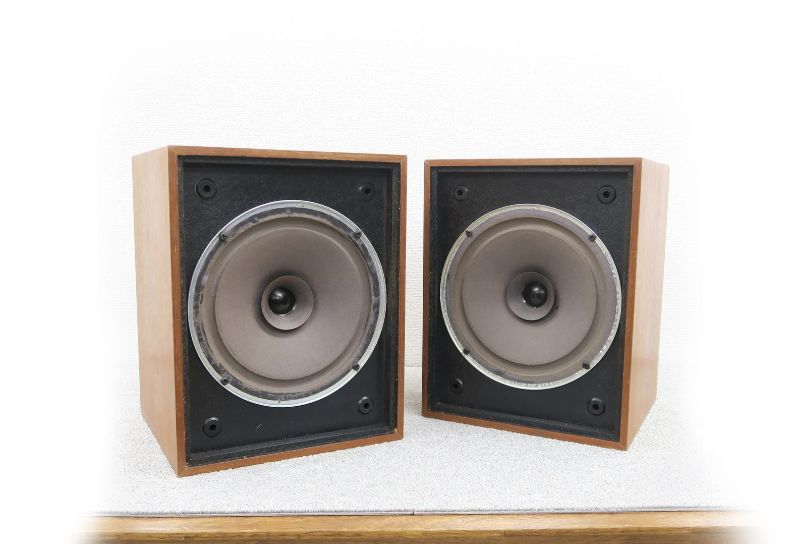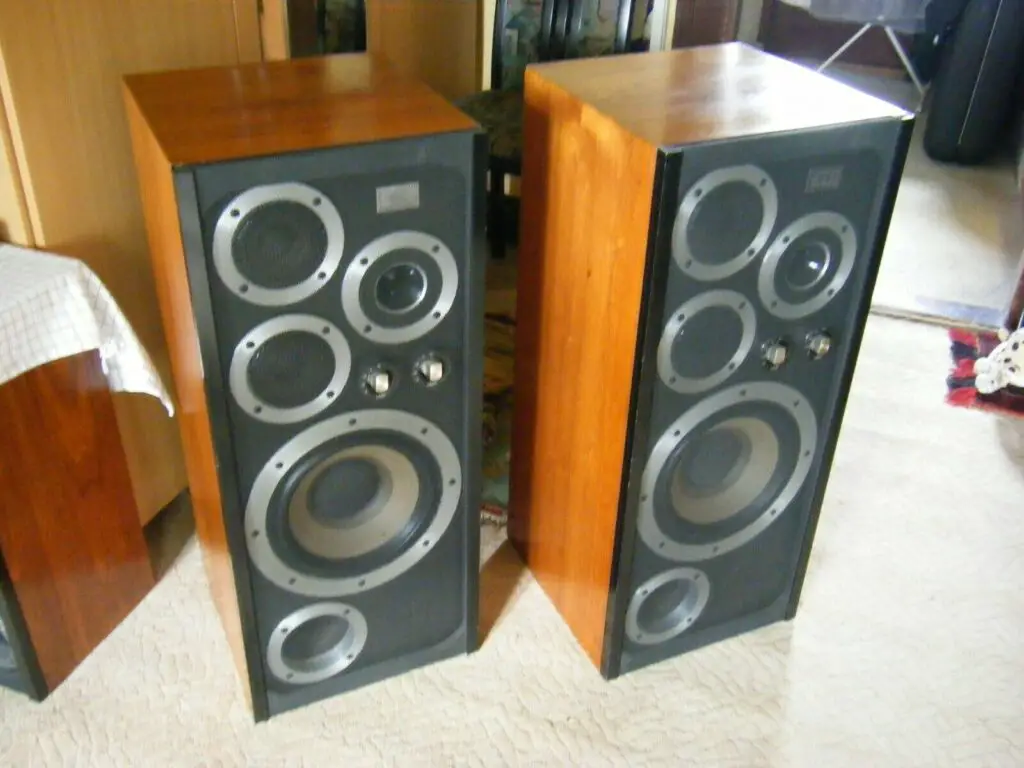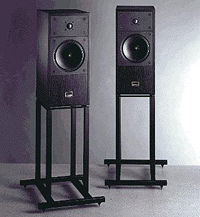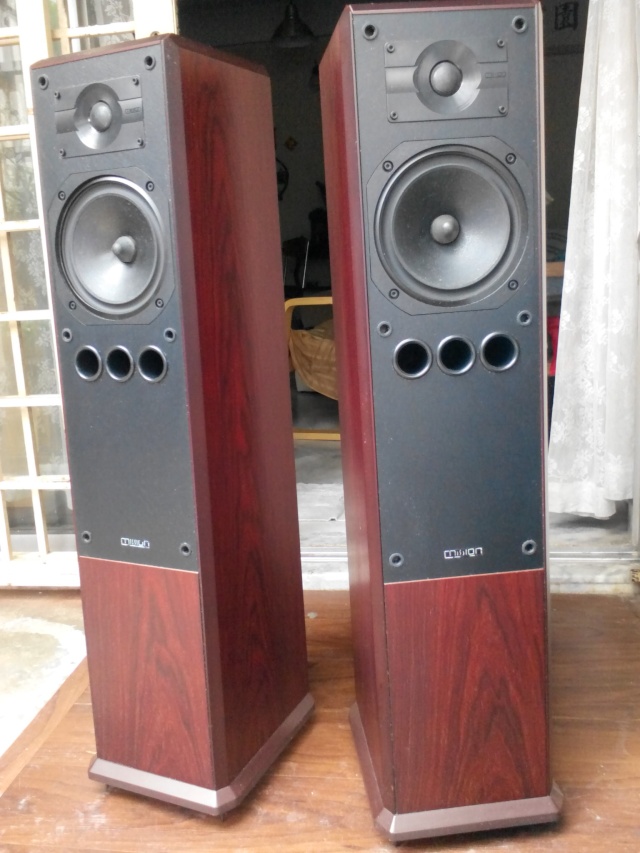Most audiophiles thirty years ago believed that everything old was garbage and that all we needed to shape our brave new future was modern technology and fresh thoughts. Of course, this was only true up to a point, and now we’re rethinking previous assumptions as well. The new Wharfedale Linton Classic achieves exactly that; as a massive, wide baffle standmount speaker, it’s very much in the mold of big 1970s designs, and completely out of style when contrasted to today’s small footprint ‘tower’ floorstanders.
“This is not a throwback to days of old, far from it,” designer Peter Comeau says. Simply put, this is solid engineering practice. The broader baffle and larger-than-normal bass and midrange sections not only improve sensitivity, but they also correspond to a lower and broader frequency baffle step than modern, slimline systems.” In other words, by avoiding the whims of fashion, he can do the right thing when it comes to the physics of speaker design.
The problem is that the whims of marketing have a big role in how current loudspeakers are designed. Peter claims that the company’s 85th anniversary has provided him with the opportunity to do something more than just a little unusual. “This style of speaker has a significant client base, as we discovered when we launched Denton 80th Anniversary (and afterwards Denton 85).” Maybe retro, but it’s more likely a reaction to the full-bodied sound of speakers created from the 1950s to the 1980s.”
For audiophiles of a certain generation – including myself, who grew up with a pair of Linton 3XPs – the name Linton will strike a bell. It was a legitimate three-way loudspeaker with a real wood cabinet and a pleasant, musical tone for the poor man’s high-end loudspeaker. The new one, on the other hand, is much larger, and instead of paper and polymer, it uses woven Kevlar in 200mm and 135mm diameters for its bass and mid drivers. The former soft dome tweeter has been replaced with a 25mm fabric dome with a metal grille. 630Hz and 2.4kHz are the crossover frequencies.
Unlike the original’s infinite baffle design, the 565x300x330mm cabinet is reflex-loaded via dual rear-mounted ports, resulting in considerably improved sensitivity (90dB up from 86dB, according to Peter) and bass extension (35Hz down from the final Linton XP2’s 60Hz). He continues, “It uses a sandwich of high density chipboard with MDF skins that scatters panel resonance more effectively than the practically common modern use of MDF alone.” “Finally, with the use of computer software and hundreds of hours of listening testing and refinement, the crossover has been designed.”
This 18.4kg speaker is so enormous and hefty that it makes the original feel like a toy – and the actual walnut or mahogany veneered cabinet is built to a much higher standard than in the past. The grilles are removable, but unlike the originals, they actually make the speaker sound worse when they’re removed; they’re specifically meant to enhance tweeter dispersion. The speakers are hand-held and should be placed with the tweeters facing inwards. I can’t emphasize enough how much better manufactured these are than their predecessors, which makes the £999.95 price tag all the more unexpected. A specialized pair of stands is available for £279.95 per pair, but if you buy both, the total cost is only £1,099.95. They look great together, but I’m not sold on the stands’ wood inserts, which appear to be a little corny.
The trouble with nostalgia, as the old joke goes, is that it isn’t what it used to be. However, this speaker sounds surprisingly current – far more so than its appearance would suggest – while avoiding the faults of both traditional and new designs. The Linton Classic is nothing like your usual modern ‘tower’ loudspeaker, with a sense of body and heaviness to the lower registers that is truly unique. “Mr. Blue Sky” by ELO, a classic late-seventies slice of pop, was the first song I played during the audition session, and this speaker shouted it out with gusto. Despite the unsettling sensation of a lot of air moving about the room, it sounded really comfortable. The impression of having music squirted at you through a figurative toothpaste tube was completely missing. Instead, it performed admirably under duress, never breaking a sweat.
The music saunters along merrily thanks to this calm, insouciant personality, and whatever the enormous Wharfedale plays sounds fun – whichever musical genre you select. For example, Rush’s Subdivisions is a dense and compressed digital recording from the early 1980s, but the Linton Classic elevated it to a new level. With unexpected ease, this speaker isolated the distinct aspects of the mix as the song progressed. I was able to enjoy all of the musicians playing in unison, hearing them blend into one seamless whole. It also seems uncannily simple to peer right into the mix and easily separate things.
Although the Wharfedale is praised for its ease, scale, and musicality, it is not without faults. If you listen closely, you can detect a small opacity in the upper frequencies, which is particularly noticeable on sparkling, ultra-clean recordings like Scritti Politti’s Perfect Way. Although it never sounded abrasive, this eighties classic highlighted the tweeter’s small lack of finesse. At the same time, it was evident that the midband softens things up a little, offering the proceedings its own – admittedly minor – acoustic stamp.
For example, this speaker couldn’t fully resolve the chiming sound of the track’s early digital synthesizer, giving vocalists a slight nasality in absolute terms. This is not a criticism, but rather a statement, given the low price. The Linton Classic’s best feature, though, is how effectively it covers its tracks. You never find yourself lingering on this topic, despite the fact that he isn’t the greatest speaker ever. Instead, you always get into the musical rhythm and enjoy yourself, no matter what you’re playing.
You’ll undoubtedly be amazed by their stereo imaging if you’ve toed-in the speakers at the precise angle – and it’s a nice balance. It lacks the pinpoint precision of some competitors with coaxial tweeter/midrange drivers, but it’s still fairly outstanding and disproves the idea that wide baffle speakers can’t picture. Every track I listened to sounded startlingly big and wide. For example, Haitink’s outstanding performance of Vaughn Williams’ Symphony No. 2 sounded incredibly atmospheric, with a strong sense of the recorded acoustic. This loudspeaker’s depth perception was also a remarkable feature.
Another appealing feature of the Linton Classic is its dynamic headroom; for a speaker of this price, it tracks melodic crescendos admirably. This speaker fails to buckle, compress, or break-up as the music climbs to a peak. This, combined with its excellent timing, results in a dynamic, energetic rendering of whatever you choose to play through it. It isn’t a highly neutral speaker – nor does it seek out to be – like some other recently re-imagined and/or re-released JBLs and Klipsches. However, it remains unadulterated enjoyment, instead presenting a large-scale, bold, and gutsy presentation with a considerable deal of delicacy and smoothness. This speaker has impeccable table manners but is never a dull listener.
Rather than recreating the past, the new Wharfedale Linton reimagines it. It captures much of what was fantastic about old school wide-baffle loudspeakers – the ease, seamless musicality, and room-filling physicality – while relegating the oldies’ issues of vagueness, dynamic compression, and poor transient response to the past. It’s a unique speaker in its own right, but what I appreciate best about it is that it provides all of this to audiophiles on a budget. Instead of being another seventies throwback trying to cash in on nostalgia, think of it as modern budget esoterica that just happens to look retro.







